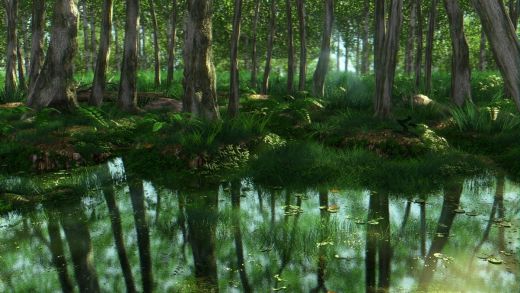
A study led by researchers from Tasmania, Chile and Germany has furthered our understanding of plant evolution by tracking the origins of electrical signalling components that plants developed to communicate and adapt to life on land.
The research team, including University of Tasmania plant scientist Dr Frances Sussmilch, studied DNA sequences of diverse plant species to map the evolutionary origins of important adaptations.
"By looking closely at the sequences for potassium channels in these species, we were excited to see evidence of ancient evolutionary events that have led to the complex cell-to-cell signalling mechanisms that can be seen in modern-day plants," Dr Sussmilch said.
This story began around 500 million years ago when the algal ancestors of land plants emerged from water and conquered dry land.
Plants faced new challenges on land, including difficult and changeable environmental conditions such as drought, heat, UV and wind, and interactions with new biological threats.
"These ancient plant pioneers made the landscape more hospitable for the first terrestrial animals and gave rise to the incredible diversity of land plants we see today, including bryophytes, ferns, gymnosperms and flowering plants," Dr Sussmilch said.
"A feature that likely helped plants to thrive on land is the presence of molecular mechanisms for cell-to-cell signalling. This enables communication between cells in the plant body, facilitating coordinated responses to environmental changes."
One means of rapid cell-to-cell communication that operates in plants is action-potential-based electrical signalling, which is comparable to the electrical impulses that control the synchronised beat of the human heart.
In plants, action potentials can be used for rapid responses to signals including wounding or touch, such as a Venus flytrap snapping shut. For electrical communication, plants need voltage-gated ion channels which control the flow of ions in and out of a cell in response to stressors.
Dr Sussmilch said channels that enable the movement of potassium ions across the cell membrane in plants play a critical role in electrical excitability.
The researchers made use of gene sequence resources for species representing each of the major groups of land plants and green algae.
They examined the sequences of potassium channels from these diverse plants for sequence 'fingerprints' indicative of different structural and functional characteristics.
The study found sequences with the fingerprint characteristic of one group of related efflux channels, that enable potassium ions to exit cells, was preserved between most land plant lineages – liverworts, hornworts, ferns, gymnosperms and flowering plants – and their closest living algal relatives.
"This suggests that this channel type may have already been present in plants when they first emerged from the water and was likely retained as land plants continued to evolve due to its importance for cell-to-cell communication," Dr Sussmilch said.
However, this channel type was absent in all moss species examined, indicating that it may have become unnecessary in the niches that early mosses occupied and been lost from the genome of a common ancestor of the mosses alive today.
In contrast, they found that the fingerprints for four distinct types of related influx channels, that enable potassium ions to enter cells, have diversified more recently, allowing for an increased variety of channel functions in flowering plants.
The research findings, together with a sequence analysis pipeline that can be used to examine the evolution of other gene families in the same way, have recently been published in the journal Trends in Plant Science.






